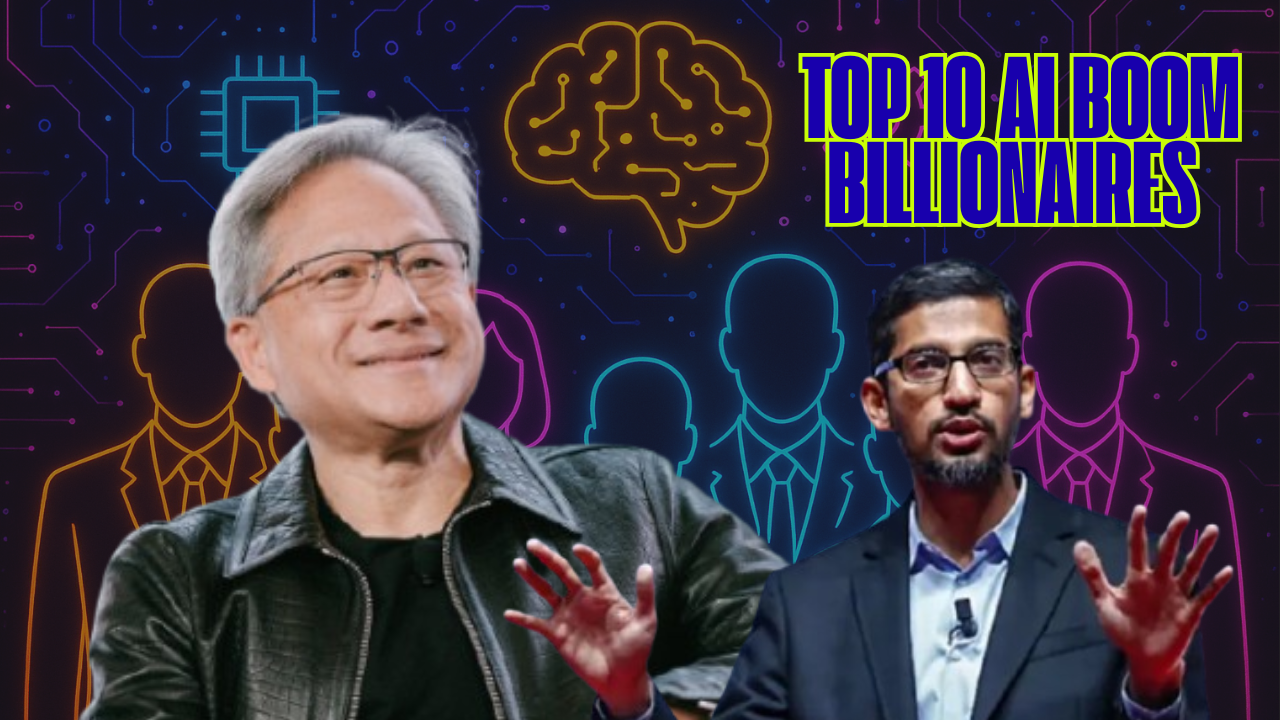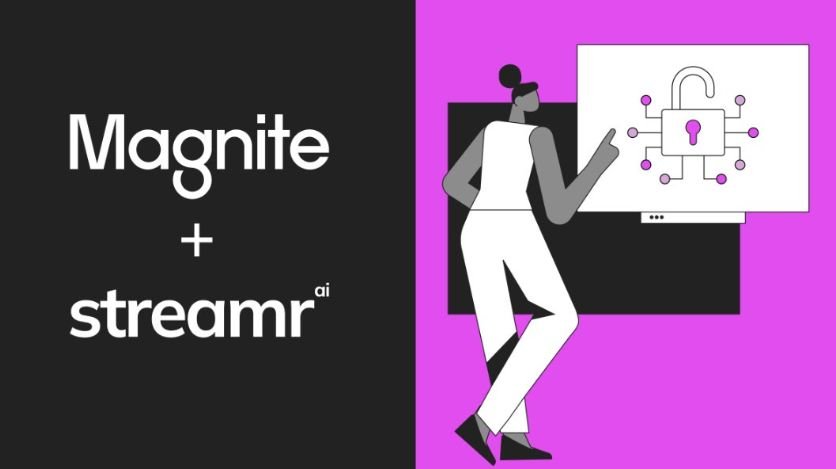Business
Top 10 AI Boom Billionaires In 2025 | Business

Collectively, the AI-fueled tech elite are now worth 3.2 trillion, according to Forbes’ 2025 Billionaires List.
Artificial intelligence has created an unprecedented wealth surge, minting 46 new billionaires and adding $600 billion to the fortunes of global tech tycoons in just one year. Collectively, the AI-fueled tech elite are now worth $3.2 trillion, according to Forbes’ 2025 Billionaires List.
From groundbreaking AI startups to massive cloud-computing providers, here are the Top 10 AI Boom Billionaires of 2025:
1. Liang Wenfeng – The DeepSeek Visionary
- Net Worth: $1 billion
- Source of Wealth: AI, Hedge Funds
Citizenship: China
Liang shook up the AI race with DeepSeek’s R1 reasoning model, hailed as cheaper yet just as powerful as OpenAI’s latest. He self-funded the venture with profits from High-Flyer Capital Management, making him one of China’s most influential AI entrepreneurs.
2. Sundar Pichai – Alphabet’s AI Champion
- Net Worth: $1.1 billion
- Source of Wealth: Google (Alphabet)
Citizenship: United States
The Chennai-born CEO finally entered the billionaires’ club after Alphabet’s Gemini 2.0 AI model boosted share prices by nearly 30%. Though he owns just 0.02% of Alphabet stock, his leadership in AI-driven growth paid off.
3. Luis von Ahn & Severin Hacker – Duolingo’s AI Language Duo
- Net Worth: $1.1 billion each
- Source of Wealth: Duolingo
Citizenship: US (von Ahn), Switzerland (Hacker)
With over 100 million monthly users, Duolingo’s AI-driven learning tools are redefining education. Von Ahn, the Guatemalan-born inventor of CAPTCHA, and his Swiss cofounder Hacker turned their 2011 project into a global edtech empire.
4. The Anthropic Seven – OpenAI Alumni Turned Billionaires
- Net Worth: $1.2 billion each
- Source of Wealth: Anthropic (Claude AI)
Citizenship: US & Canada
Dario Amodei, Daniela Amodei, Tom Brown, Jack Clark, Jared Kaplan, Sam McCandlish, and Christopher Olah—all ex-OpenAI staff—struck gold with Anthropic’s $61.5 billion valuation. Their AI chatbot Claude is a direct rival to ChatGPT.
5. Yao Runhao – Gaming Meets AI
- Net Worth: $1.3 billion
- Source of Wealth: Online Games
Citizenship: China
Yao’s AI dating simulation game “Love and Deepspace” became an overnight sensation with six million monthly players, contributing over 80% of Paper Games’ $850 million revenue.
6. Phil Shawe – AI in Translation Services
- Net Worth: $1.8 billion
- Source of Wealth: TransPerfect
Citizenship: United States
Co-founder of TransPerfect, Shawe survived a bitter corporate feud to build one of the world’s largest AI-powered translation companies, serving Microsoft and the US Department of Justice.
7. Joe Lonsdale – The VC Billionaire
- Net Worth: $2 billion
- Source of Wealth: Palantir, Tech Investments
Citizenship: United States
Palantir’s stock boom (+225% in one year) propelled its cofounder onto the list. With ties to Anduril and OpenGov, Lonsdale has become a central player in AI-powered defense and data analytics.
8. Alexandr Wang – The Youngest AI Billionaire
- Net Worth: $2 billion
- Source of Wealth:
Scale AI - Citizenship: United States
At just 28, Wang is the world’s youngest self-made billionaire. His startup Scale AI, valued at $14 billion, provides crucial data labeling for OpenAI, Google, and Meta—and now partners with the US Department of Defense.
9. CoreWeave Founders – The Cloud Kings of AI
- Net Worth: $3.1B (
Michael Intrator ), $2B (Brian Venturo), $1.5B (Brannin McBee), $1.2B (Jack Cogen) - Source of Wealth: Cloud Computing
- Citizenship: United States
CoreWeave transformed from crypto mining to AI infrastructure, now powering startups and giants like Microsoft. With a $23 billion IPO, all four cofounders entered the billionaire ranks in 2025.
10. Jensen Huang – The Hardware Titan
- Net Worth: +$21.7 billion (added in 2025 alone)
- Source of Wealth: Nvidia
Citizenship: United States
While not new to the list, Nvidia’s CEO deserves mention. His chips are the backbone of the AI revolution, and soaring demand added nearly $22 billion to his fortune in a single year.(Source: Forbes)The AI gold rush has minted billionaires from startups, gaming, cloud infrastructure, and translation services—transforming not just Silicon Valley, but global business itself. With valuations skyrocketing, the question remains: is this an AI bubble, or just the beginning of a new tech era?
Business
Advancing Business Efficiency Through Silverback Chatbot AI Workflow

Silverback AI Chatbot continues to highlight its ongoing developments in artificial intelligence solutions with a particular focus on the role of workflows in managing automation and communication. The introduction of the Silverback Chatbot AI Workflow underscores the company’s position in supporting organizations seeking structured, adaptable, and intelligent processes for customer engagement and operational tasks.
The Silverback Chatbot AI Workflow is built to provide a framework where businesses can integrate multiple functions under one system, enabling a seamless connection between communication, task execution, and decision-making. Instead of handling fragmented activities across different applications, this approach organizes activities through AI-driven steps, allowing each stage of interaction or automation to follow a logical path. The result is not just increased efficiency, but also the ability to manage operations with more clarity and reduced manual oversight.
Workflows in the context of AI chatbots are not new, but their evolution has been significant. Early chatbot systems largely focused on scripted responses to user queries, often limited by predefined pathways. The current landscape, as represented by Silverback Chatbot AI Workflow, extends far beyond those initial capabilities. Modern workflows combine automation, adaptive intelligence, and contextual understanding to deliver a process that adjusts dynamically based on user input and organizational needs. This adaptability is particularly relevant in sectors where customer interaction can take unpredictable directions, requiring systems that respond flexibly while maintaining structure.
One of the distinguishing features of the Silverback Chatbot AI Workflow is its ability to connect with a wide variety of functions that businesses rely on. Whether coordinating internal tasks such as ticket assignment, or external-facing services like guiding a customer through a purchase or troubleshooting inquiry, workflows provide a consistent and reliable mechanism for completion. By integrating communication with automation, businesses gain a model that both supports employees and delivers a smoother experience to clients or customers.
The development of these workflows represents a broader trend in artificial intelligence: moving from standalone tools toward ecosystems that unify operations. As businesses encounter growing complexity in managing communication channels and back-end processes, AI-driven workflows emerge as a solution that reduces friction while preserving accuracy. This shift not only benefits productivity but also helps organizations maintain compliance, consistency, and measurable results across departments.
A key advantage of implementing structured workflows is the reduction of manual repetition. In many industries, employees spend significant time repeating tasks such as data entry, scheduling, or responding to routine inquiries. The Silverback Chatbot AI Workflow addresses these inefficiencies by automating predictable steps, allowing employees to redirect their attention toward more nuanced work. This combination of human oversight with machine efficiency illustrates the complementary role AI can play rather than replacing human decision-making entirely.
The adaptability of workflows is equally important. Businesses rarely operate in static environments; customer expectations, regulatory requirements, and internal priorities evolve regularly. A static system that cannot adjust to new conditions quickly becomes outdated. By contrast, the Silverback Chatbot AI Workflow is designed to be adjustable, so organizations can update pathways, introduce new actions, or refine decision points without overhauling their entire system. This modularity helps ensure that the technology remains valuable in the long term, aligning with shifting business landscapes.
From a customer engagement perspective, workflows are essential to ensuring interactions remain coherent and purposeful. When individuals engage with an AI chatbot, they expect clear guidance toward solutions. A poorly structured interaction can create confusion or dissatisfaction. The Silverback Chatbot AI Workflow mitigates this risk by providing a clear, step-by-step process behind each interaction, while still allowing flexibility when user input diverges from the expected path. This balance between structure and adaptability is central to maintaining user confidence in AI-driven support.
Beyond customer engagement, workflows support broader business objectives, such as operational transparency and performance tracking. Each step within a workflow can be monitored, allowing organizations to identify areas of delay, frequent points of user drop-off, or opportunities for further automation. This level of visibility provides valuable data that can inform decision-making, improve resource allocation, and support continuous optimization.
The emphasis on workflow also connects to wider discussions about how businesses adopt AI responsibly. Rather than deploying technology haphazardly, workflows provide a framework that ensures AI implementation aligns with organizational goals and ethical considerations. Structured pathways reduce the risk of unintended outcomes, such as incorrect information delivery or inconsistent handling of user data. By embedding rules and oversight into workflows, Silverback AI Chatbot demonstrates how artificial intelligence can be deployed responsibly and effectively.
As industries continue to explore the role of AI in daily operations, the conversation is shifting toward systems that integrate smoothly with existing processes while offering flexibility for growth. Silverback Chatbot AI Workflow exemplifies this direction by highlighting the importance of both structure and adaptability. Instead of relying on fragmented tools that require manual coordination, organizations can depend on workflows to bring clarity and automation to complex activities.
The introduction of Silverback Chatbot AI Workflow is not only an update to existing chatbot capabilities but also an indication of how the field of conversational AI is advancing. Workflows allow businesses to think beyond individual conversations, considering instead the broader chain of actions and decisions that must occur to deliver effective service. By organizing these actions intelligently, workflows transform AI chatbots from simple conversation partners into central hubs of business operations.
The broader impact of adopting structured workflows extends to scalability as well. Organizations often face challenges when attempting to expand operations, as growth introduces new layers of complexity. Without a reliable system, scaling can lead to inefficiencies or inconsistent service. Silverback Chatbot AI Workflow provides a foundation that supports scalability, ensuring that as organizations expand, their AI-driven processes maintain reliability and coherence.
In reflecting on this development, it is clear that the role of workflows in AI is more than a technical improvement; it represents a shift in how businesses conceptualize the integration of artificial intelligence. By moving beyond isolated interactions and embracing a system that organizes tasks comprehensively, organizations place themselves in a stronger position to harness the full potential of AI. Silverback Chatbot AI Workflow stands as an example of this transformation, showing how structured yet adaptable systems can support both present needs and future growth.
As AI continues to progress, the ability to unify operations through workflows will likely become a defining factor in successful adoption. Silverback AI Chatbot, through its AI Workflow approach, demonstrates how technology can support clarity, efficiency, and long-term adaptability. In doing so, it highlights the growing importance of structured intelligence in shaping the next phase of business operations. For more visit: https://pressadvantage.com/story/82200-silverback-ai-chatbot-expands-ai-agents-technology-to-strengthen-role-of-chatbot-marketing-in-busine
###
For more information about Silverback AI Chatbot Assistant, contact the company here:
Silverback AI Chatbot Assistant
Daren
info@silverbackchatbot.com
Business
Magnite Acquires Streamr.ai To Unlock Small Business Advertising Spend For CTV Publishers

Sydney,
AUSTRALIA — Magnite (Nasdaq: MGNI), the largest
independent sell-side advertising company, today announced
the acquisition of streamr.ai, a
platform specialising in AI tools that make Connected
Television (CTV) advertising accessible to Small and
Medium-sized Businesses (SMBs)—a large and growing revenue
opportunity for CTV publishers. Magnite will offer streamr.ai’s technology to
its ecosystem partners working with SMBs, including
agencies, retail media networks, publishers operating buyer
marketplaces, and DSPs. The financial terms of the
transaction were not disclosed.
“The CTV advertising
opportunity for small businesses is enormous, but it’s
been bottlenecked by complexity and high costs,” said
Michael Barrett, CEO of Magnite. “streamr.ai’s technology uses
AI to accelerate this transition for SMBs, making tasks like
CTV creative generation and campaign setup much easier. By
offering these tools to our ecosystem partners with SMB
clients, we aim to unlock a significant revenue opportunity
for our CTV publishers. We’re thrilled to have the streamr.ai team join us, and
we’ll continue to grow our AI expertise and capabilities
across all Magnite products.”
Advertisement – scroll to continue reading
streamr.ai co-founders, CEO
Jonathan Moffie—formerly product lead at Wurl (acquired by
AppLovin), OrkaTV, Yahoo and Shutterstock—and CTO Frank
Turano, formerly an engineer at Shutterstock and Dotdash
Meredith, will join Magnite.
“Magnite is the perfect
home for our technology and talent,” said Jonathan Moffie,
CEO and co-founder of streamr.ai.
“Magnite shares our vision for helping small businesses
grow revenue through CTV advertising, and their
relationships and resources will enable us to accelerate
that process.”
We believe that Magnite’s
acquisition of streamr.ai creates an exciting
opportunity to leverage AI to grow CTV advertising, empower
the company’s partners with cutting-edge technology, and
continue to drive long-term value for our publishers and the
broader ecosystem.
About
Magnite
We’re Magnite (NASDAQ: MGNI), the
world’s largest independent sell-side advertising company.
Publishers use our technology to monetise their content
across all screens and formats including CTV, online video,
display, and audio. The world’s leading agencies and
brands trust our platform to access brand-safe, high-quality
ad inventory and execute billions of advertising
transactions each month. Anchored in bustling New York City,
sunny Los Angeles, mile high Denver, historic London,
colorful Singapore, and down under in Sydney, Magnite has
offices across North America, EMEA, LATAM, and
APAC.
About streamr.ai
streamr.ai specialises in
building cutting-edge GenAI technology. Offering innovative
solutions for Broadcasters, AdTech Platforms, and Agencies
to capture a larger share of CTV ad spend. streamr.ai is the easiest way
to generate video ads and launch them on CTV in less than 2
minutes. To learn more about streamr.ai GenAI Solutions,
please visit us online at streamr.ai.
Business
Oracle stock soars as CEO says AI-fueled cloud revenue set to soar to $144 billion

Oracle (ORCL) stock jumped more than 25% in after-hours trading Tuesday as the software giant said its AI-fueled cloud revenue is set to jump to $144 billion by its 2030 fiscal year — a massive leap from the company’s projection of less than $20 billion for the business in its current fiscal year.
“We expect Oracle Cloud Infrastructure revenue to grow 77% to $18 billion this fiscal year — and then increase to $32 billion, $73 billion, $114 billion, and $144 billion over the subsequent four years,” said CEO Safra Catz in a statement Tuesday.
The stock’s gain comes despite Oracle reporting earnings for the first quarter of its fiscal year 2026 that fell below Wall Street’s expectations. The company reported revenue of $14.9 billion, slightly below the $15 billion expected by analysts polled by Bloomberg. The software giant’s adjusted earnings per share of $1.47 also came in below the projected $1.48.
Oracle’s optimistic revenue outlook came as it raised its RPO, or remaining performance obligation, the total value of contract revenue Oracle will deliver in the future, based on customer agreements.
“We signed four multibillion-dollar contracts with three different customers in Q1,” Catz said in a statement Tuesday. Catz said this resulted in the company’s contract backlog increasing 359% to $455 billion in its first quarter. The executive added that the company expects to sign up several additional multibillion-dollar customers and for its RPO to exceed half a trillion dollars.
“We have signed significant cloud contracts with the who’s who of AI, including OpenAI, xAI, Meta, and many others,” Catz said in a call with investors following the company’s earnings report.
Oracle has been securing a massive amount of Nvidia’s coveted GPUs (graphics processing units, or AI chips) and renting out that computing power through its OCI business to rival those of Big Tech peers such as Amazon (AMZN) and Alphabet’s (GOOG, GOOGL) Google. As the software giant has poured billions into its AI ambitions by investing in data center infrastructure, it’s laid off workers and reportedly discussed eliminating cash raises and bonuses for employees this year.
The company said in a call with analysts following its earnings report Tuesday that its capital expenditures will jump to roughly $35 billion in 2026, up from its previous outlook of around $25 billion for the year and $21 billion last year.
Shares in the software giant have soared more than 70% over the past year.
The company’s last quarterly earnings caught Wall Street’s attention when it announced a new deal with a customer set to bring in over $30 billion in annual revenue starting in its 2028 fiscal year, with multiple media outlets reporting the customer as OpenAI. Investors were listening for any commentary from executives on further details of the deal, but none were given.
-

 Business2 weeks ago
Business2 weeks agoThe Guardian view on Trump and the Fed: independence is no substitute for accountability | Editorial
-
Tools & Platforms4 weeks ago
Building Trust in Military AI Starts with Opening the Black Box – War on the Rocks
-

 Ethics & Policy1 month ago
Ethics & Policy1 month agoSDAIA Supports Saudi Arabia’s Leadership in Shaping Global AI Ethics, Policy, and Research – وكالة الأنباء السعودية
-

 Events & Conferences4 months ago
Events & Conferences4 months agoJourney to 1000 models: Scaling Instagram’s recommendation system
-

 Jobs & Careers2 months ago
Jobs & Careers2 months agoMumbai-based Perplexity Alternative Has 60k+ Users Without Funding
-

 Podcasts & Talks2 months ago
Podcasts & Talks2 months agoHappy 4th of July! 🎆 Made with Veo 3 in Gemini
-

 Education2 months ago
Education2 months agoMacron says UK and France have duty to tackle illegal migration ‘with humanity, solidarity and firmness’ – UK politics live | Politics
-

 Education2 months ago
Education2 months agoVEX Robotics launches AI-powered classroom robotics system
-

 Funding & Business2 months ago
Funding & Business2 months agoKayak and Expedia race to build AI travel agents that turn social posts into itineraries
-

 Podcasts & Talks2 months ago
Podcasts & Talks2 months agoOpenAI 🤝 @teamganassi





















